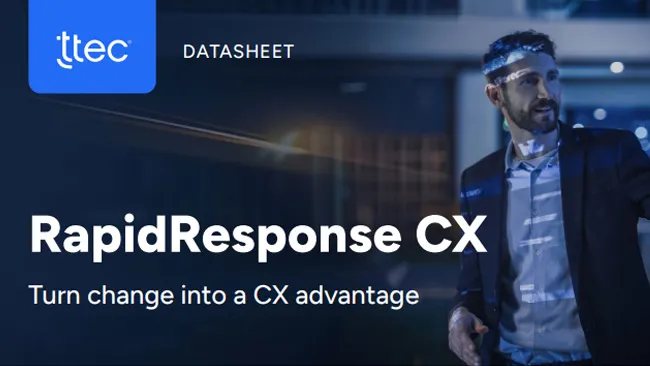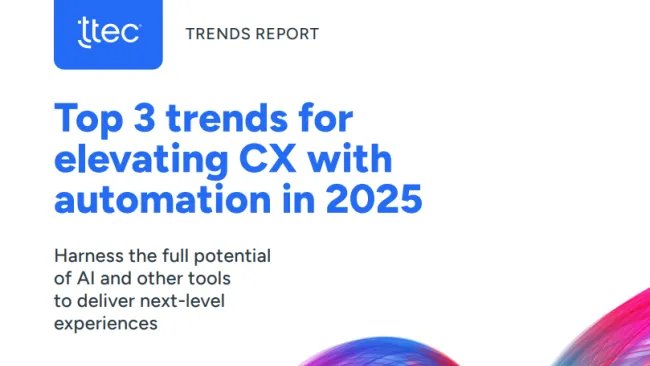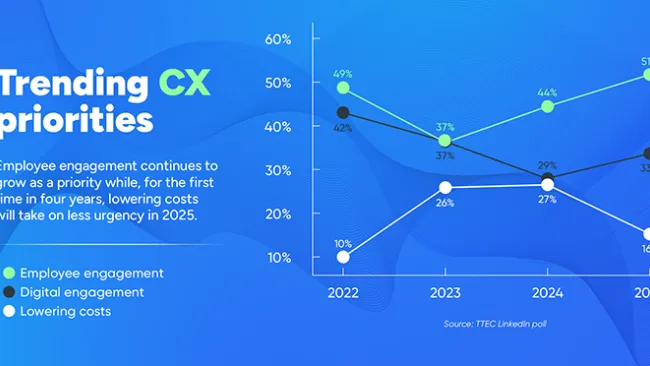When leaders describe their vision for disrupting an industry, it often hinges on what that looks like for customers. It's about surprising and delighting them while making the experience faster and more convenient. But where does the employee fit into that vision?
Employee turnover is expensive. Losing an entry-level employee costs employers about 50 percent of that person’s annual salary, and a senior-level employee can cost employers 125 percent of their salary, according to LinkedIn.
It also undermines a company’s ability to deliver higher levels of customer service. And especially hypergrowth startups that are bent on capturing market share and customer loyalty, this is unacceptable. At a time when unemployment is low and workers have a bevy of job opportunities to choose from, hiring—and retaining—talented people is more important than ever.
Here are 5 employee engagement best practices for business leaders to increase employee retention and the company's overall level of engagement.
1. Culture matters for improving employee engagement
Employees naturally demand fair compensation for their labor, but a salary isn’t enough to create a dedicated and productive workforce. Case in point: Glassdoor recently released the winners of its 11th annual Employees' Choice Awards, which includes the Best Places to Work in 2019. A quick glance at the top five SMB winners and employee comments makes it clear that workplace culture and leadership are intertwined as integral parts of the employee experience.
- Heap: “Fast-paced culture of a startup with the guidance and backbone of a strong leadership team. Great co-workers across all teams in the company.”
- Horizon Innovations: “The culture here is very vibrant and alive. Not your typical ‘office job.’ In fact, we're usually in client-facing roles throughout the day. Extremely motivating and will definitely get you prepared for success.”
- Silverline: “The community/work culture environment is the best I've been part of. The company is committed to making employees (and clients) happy, trained, and continually involved.”
- Marketing 360: “If you are driven, you will find growth within the company. Culture is a big part of the experience at Marketing360, through bonding activities with teammates and hosting company events outside of the workplace.”
- Digital Prospectors: “Amazing leadership, high value placed on work-life balance. This is a company with high integrity.”
As for how to create a culture of engagement, workplace culture is unique to each organization, especially hypergrowth companies that are still blazing their own trail. But human resource experts agree that a positive culture is one where employees feel empowered to be successful at their job; leaders care about employee well-being, and everyone reflects the company’s values.
2. Engage your employees early
As many as 40 percent of employees leave within the first 90 days of their employment, according to TDn2K, a research and consulting firm for restaurants. It’s therefore essential that employers engage their employees starting from day one. That includes providing a robust onboarding program that helps employees feel excited and prepared to be part of the organization.
Especially as a company expands, it’s important for employees to understand what’s expected of them, how their success is measured, and the opportunities for growth. Employee engagement survey research shows that employees who don’t feel that there’s an opportunity to grow and develop their skills are more likely to leave.
3. Hire a CX workforce for the future
Companies that value the customer experience hire people who are obsessed with what they do. It’s why Foot Locker hires sneakerheads and why GameStop hires gamers. Knowledgeable employees who are passionate about the brand and the industry are more likely to understand a customer’s needs and provide the best answer. Additionally, more and more companies are not just hiring candidates for a specific role, but rather individuals who show an aptitude for learning new skills and the ability to take on new roles as the need arises.
4. Look for emotionally intelligent managers
Enthusiasm only goes so far. Customer support employees also need a strong support system themselves. In fact, employee feedback studies have found that an employee's relationship with his or her manager is a key indicator of success or failure on the job. Managers have multiple ways to influence employee performance through regular meetings, providing constructive feedback, conducting performance reviews, and other methods.
However, these practices are useless unless the manager has the emotional intelligence to understand and connect with his or her teammates. Good managers also know which employees are an asset to the company. And they often know who is unhappy or dissatisfied with their current role. In contrast, managers who strictly follow a hierarchical leadership model are typically out of touch and inspire lower degrees of loyalty and productivity.
5. Empower employees to lead
Employees want to feel trusted and appreciated for the independent decisions they make and the results they produce. Work with managers to identify employees who should be put in a position of influence. Empower those employees to discover their own potential. Observe how they perform as leaders and collaborators.
There are multiple layers to increasing employee engagement; it’s not just how employees respond to their leaders, but how employees gravitate toward each other. Employees are most engaged when they feel a sense of ownership toward their work and the example their performance sets for others. And this often occurs when they are placed in roles of influence and responsibility.
Empowered employees empower positive customer experiences
Delivering a great customer experience is about more than a creating a compelling product or service. The employee experience, including workplace culture, leadership support, and feeling empowered is just as important.
Because even innovative, disruptive companies will eventually fail if employees are underpaid, unappreciated, and disengaged. Engaged employees come to work because they believe in what they are doing. They have the tools and resources they need to be successful; their employer and manager care about their well-being, and they’re invested in supporting the company’s customers. They don’t show up every day at the office just to collect a paycheck. They are emotionally committed to producing great work, which in turn, enables the company to reach its goals.
Hypergrowth requires employee engagement and customer experience innovation
Regardless of industry or company-size, these employee engagement best practices are important to increase employee satisfaction and employee retention. For hypergrowth companies looking to scale rapidly and accelerate their customer experience as fast as they're growing their business, these best practices are even more crucial. Engaged, happy employees help create positive customer experiences.
For more ideas on how to rethink the customer and employee experiences to drive sustainable growth for high-growth startups, check out our e-book, “Hypergrowth Meets CX Excellence. You'll learn how to create a differentiated and scalable customer experience, 6 ways to extend customer relationships, and why customer support is a vital source of insight.
















